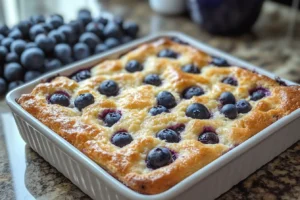Table of Contents
There’s something almost magical about the moment you serve soup in a homemade sourdough bread bowl. I discovered this sourdough bread bowl recipe during one of those chilly Asheville evenings when my family needed something that felt like a warm hug. The way the crusty exterior gives way to that soft, tangy interior as you tear off a piece to dunk into your soup… it’s pure comfort in edible form!
My daughter Lila now calls these “fairy house soup bowls” because they remind her of little cottages, and honestly, I can’t disagree. There’s something whimsical and nurturing about serving a meal that doubles as its own container, don’t you think? As someone who’s made more than her fair share of sourdough experiments (including a few hockey pucks in the early days), I promise this sourdough bread bowls recipe is approachable even if you’re new to baking with a starter.
Why You’ll Love This Sourdough Bread Bowl Recipe
When I first attempted a sourdough bread bowl recipe, I was intimidated. But after testing and tweaking, I’ve created a version that delivers consistent results without requiring a baking degree. Here’s why it’s become a staple in our home:
- The dough is forgiving – perfect for busy parents or beginner bakers
- The exterior develops a gorgeous rustic crust while maintaining a chewy interior
- Your house will smell absolutely divine for hours
- They freeze beautifully, so you can make them ahead for busy weeknights
- They elevate even the simplest soup into a restaurant-worthy meal, If you’re in the mood for a hearty appetizer that pairs beautifully with bread, try this Boudin Dip Recipe—it’s rich, creamy, and totally addictive.
- The recipe uses basic ingredients you likely have on hand
- They’re endlessly customizable with herbs, cheese, or your favorite mix-ins
- The sense of accomplishment when you pull these beauties from the oven is unmatched
Ingredients
For this sourdough bread bowl recipe, you’ll need:
- 1 cup (220g) active sourdough starter (fed and bubbly)
- 1 ½ cups (360ml) lukewarm water
- 4 cups (480g) bread flour (plus extra for dusting)
- 2 tsp salt
- 2 tbsp olive oil (plus more for coating the bowl)
- 1 tbsp honey or maple syrup
- Optional: 1 egg white mixed with 1 tbsp water for glossy finish
- Optional add-ins: 1-2 tbsp chopped fresh herbs, 1/4 cup grated parmesan, or 1 tbsp everything bagel seasoning
Starter tip: Your sourdough starter should be active and bubbly, ideally fed 4-8 hours before making the dough. Not sure if it’s ready? A small spoonful should float in water when it’s at its peak activity.
Flour substitution: If you don’t have bread flour, all-purpose will work too — your bread bowls might just be slightly less chewy. For a heartier version, you can substitute up to 1 cup of whole wheat flour, but you may need a touch more water.
Timing
- Prep time: 30 minutes
- First rise: 4-6 hours (or overnight in the refrigerator)
- Shaping: 15 minutes
- Second rise: 1-2 hours
- Baking time: 30-35 minutes
- Total time: 6-8 hours (mostly hands-off)
I know this might seem like a long process, but trust me — most of this is passive time where the dough is doing its magic while you’re off living your life! The actual hands-on time is minimal, and the results are so worth it.
Step-by-Step Instructions
Step 1: Mix Your Dough
In a large mixing bowl, combine your bubbly sourdough starter with lukewarm water, honey, and olive oil. Mix until the starter is fully dissolved. Stir in the flour and salt using a wooden spoon until the dough looks shaggy and just comes together.
Olivia’s Tip: I’ve learned that water temperature matters! Too hot will kill your yeast, too cold will slow fermentation. Shoot for water that feels like comfortable bath water (around 90-95°F).
Step 2: Develop the Gluten
Turn your dough onto a lightly floured surface and knead for about 5-7 minutes until smooth and elastic. The dough should pass the “window pane test” — when you can stretch a small piece thin enough to see light through without tearing.
Reality Check: My first few attempts at kneading were awkward at best! If you’re new to this, search for “bread kneading techniques” on YouTube. And remember, there’s no such thing as bad technique if your bread turns out delicious!
Step 3: First Rise
Place your dough in a lightly oiled bowl, turning to coat all sides. Cover with a damp kitchen towel or plastic wrap and let rise at room temperature (68-72°F) for 4-6 hours, or until doubled in size. For deeper flavor, you can refrigerate the dough overnight (up to 24 hours).
Timing Tip: This flexible timing makes it perfect for fitting into your schedule. I often make the dough in the morning, let it rise while I’m running errands, and finish the bread bowls in time for dinner.
Step 4: Shape Your Bread Bowls
Lightly deflate the dough with your knuckles and transfer it to a floured work surface. Divide the dough into 4 equal portions for large bowls or 6 portions for smaller ones. Shape each piece into a tight ball by pulling the edges toward the center and pinching to seal.
Place the dough balls seam-side down on a parchment-lined baking sheet, spacing them at least 3 inches apart. Cover loosely and let rise for another 1-2 hours, or until puffy.
Shaping Secret: The key to a good bread bowl is creating surface tension. I cup my hands around the dough ball and rotate it while applying gentle pressure to create a smooth, tight exterior.
Step 5: Prepare for Baking
Preheat your oven to 450°F with a small, oven-safe dish of water on the bottom rack (this creates steam for a better crust).
Using a sharp knife or bread lame, score the top of each loaf with an “X” or other pattern about ¼ inch deep. This allows for expansion and gives your bread bowls that artisanal look.
If desired, brush with egg wash for a glossy finish, or dust with a little flour for a rustic appearance.
Step 6: Bake to Golden Perfection
Bake for 25-30 minutes, or until the bread bowls are deep golden brown and sound hollow when tapped on the bottom. For extra insurance, their internal temperature should read 190-200°F on an instant-read thermometer.
Let the bread cool completely on a wire rack before slicing—it’s worth the wait.
Cooking Tips
- The Poke Test: During the second rise, gently poke the dough with your finger. Press the dough gently—if it springs back right away, give it more time. If it slowly rebounds and holds a slight dent, it’s ready for the oven.
- Create a Crust: For an even crustier exterior, spray the inside of your oven with water from a clean spray bottle in the first 5 minutes of baking. Just be careful opening the oven door!
- Scoring Technique: If you don’t have a bread lame, use a very sharp knife or even a razor blade. Dip it in water between cuts to prevent sticking.
- Prioritize Temperature: Yeast is happiest between 75-85°F. If your kitchen is cold, try turning on your oven light and placing the covered dough inside the (turned off) oven for rising.
- Don’t Rush the Cool Down: As tempting as it is to dig in immediately, allowing your bread bowls to cool properly ensures the interior structure sets correctly, And if you love rustic homemade flavors, don’t miss our sweet and salty Butter Toffee Pretzels Recipe for a fun treat that keeps well in your pantry.
A Little Sourdough Story
I still remember the first time I served these sourdough bread bowls to my in-laws. My father-in-law, who normally gives the standard “it’s fine” to most home cooking, actually stopped mid-bite, looked up, and said, “Olivia, this is restaurant quality.”
Coming from him, that was basically the equivalent of a Michelin star! What made it even more special was watching little Caleb observe everyone eating soup from “bread cups” as he called them. His eyes were so wide with wonder, you’d think we were performing magic at the dinner table. Those moments—the ones where food brings a sense of both comfort and delight—those are why I spend hours tending to my sourdough starter like it’s a family pet.
Nutritional Information
Each sourdough bread bowl (when divided into 4) contains approximately:
- Calories: 380-420 per bowl (without soup)
- Protein: 12g
- Carbohydrates: 75g
- Fiber: 3g
- Fat: 5g
Sourdough has some nutritional advantages over regular bread thanks to the fermentation process. It contains lactic acid bacteria that may make the bread:
- Easier to digest for some people
- Lower on the glycemic index than many commercial breads
- Higher in available nutrients due to the breakdown of phytic acid
Healthier Alternatives
While traditional sourdough bread bowls are made with white bread flour, you can experiment with these variations:
- Whole Grain Version: Substitute up to 50% of the bread flour with whole wheat flour for added fiber and nutrients. You’ll need to increase the water slightly (about 2 tablespoons extra).
- Seeded Variation: Add 2-3 tablespoons of mixed seeds (flax, sunflower, pumpkin) to the dough for omega-3s and extra protein.
- Gluten-Sensitive Option: While true sourdough does require gluten to develop properly, the long fermentation process breaks down some of the gluten proteins, potentially making it more tolerable for those with mild gluten sensitivity (though not celiac disease). You can read more about the science behind sourdough fermentation and gluten if you’re curious!
- Lower Sodium: You can reduce the salt to 1 teaspoon if you’re watching your sodium intake, though it will affect the flavor somewhat.
Serving Suggestions
Once your sourdough bread bowls are cooled, it’s time for the fun part! Here’s how to prepare and serve them:
- Cut a circle from the top of each bread bowl, about 1-2 inches from the edge.
- Carefully hollow out the center, leaving about ¾-inch thickness on the bottom and sides.
- Save the removed bread pieces for dipping!
Perfect fillings for your sourdough bread bowls include:
- Classic Pairings: Creamy clam chowder, broccoli cheddar, or French onion soup
- Hearty Options: Beef stew, chili, or potato bacon soup
- Lighter Choices: Tomato basil soup, butternut squash bisque, or white bean soup
- Unexpected Delights: Mac and cheese, spinach artichoke dip, or breakfast scramble
For a fun family dinner, try setting up a “soup bar” with a couple of different options and let everyone fill their own bread bowl. When I do this, my kids get so excited they actually eat vegetables without complaint!
Common Mistakes to Avoid
- Skipping the Scoring: That cute little “X” on top isn’t just decorative! This step encourages the bread to rise evenly and develop a beautiful crust.
- Opening the Oven Too Soon: Resist the urge to peek during the first 15 minutes when the bread is doing most of its rising.
- Underbaking: Pale bread bowls won’t have the structural integrity to hold soup without getting soggy. Bake until deep golden brown.
- Cutting Too Soon: I know it’s tempting, but cutting into hot bread releases steam that’s still cooking the interior, potentially resulting in gummy bread.
- Making the Walls Too Thin: When hollowing out your bread bowls, leave enough thickness to support your soup without collapsing or leaking.
Storing & Reheating Tips
These sourdough bread bowls actually get better with proper storage!
Short-Term Storage (1-2 days):
Store cooled bread bowls in a paper bag or loosely covered with a kitchen towel at room temperature. Avoid plastic bags for freshly baked bread, as they trap moisture and make the crust soft.
Longer Storage (up to 3 months):
Freeze completely cooled bread bowls in freezer-safe bags with as much air removed as possible. To prevent freezer burn, I like to wrap each one in parchment paper first.
Reheating:
For the best texture revival, sprinkle frozen or day-old bread bowls with a few drops of water, then heat in a 350°F oven for about 10 minutes (from room temperature) or 15-20 minutes (from frozen) until warmed through and the crust is crisp again.
FAQs
Can I make this sourdough bread bowl recipe without maintaining a starter?
While traditional sourdough requires a starter, you can create a “cheater sourdough” by mixing 1 cup of plain yogurt with 1 tablespoon of white vinegar and 2 teaspoons of instant yeast to replace the starter in this recipe. The flavor won’t be identical, but you’ll get a tangy taste that’s close!
How do I keep my bread bowl from getting soggy?
My favorite trick is to brush the inside of your hollowed-out bread bowl with a bit of olive oil, then place it in a 350°F oven for about 5-7 minutes to create a light toasted interior barrier before adding soup. Just don’t overdo it, or your bread bowl will become too crunchy!
Final Thoughts
There’s something deeply satisfying about making these sourdough bread bowls from scratch. Beyond the incredible aroma that fills your home and the impressive presentation at your table, there’s the simple joy of creating something with your hands that nourishes the people you love.
I’ve made this sourdough bread bowl recipe during cozy winter evenings, for casual dinner parties, and even as a special surprise when someone in our family needs comfort. Each time, it creates not just a meal, but a memory around our table.
Whether you’re a seasoned sourdough baker or trying your hand at bread making for the first time, I hope you’ll give these bread bowls a try. They’re forgiving enough for beginners but special enough to make you feel like a professional baker. And when you slice off that top and ladle in your favorite soup? Pure kitchen magic.
I’d love to hear how your sourdough bread bowls turn out! Until next time—wishing you warm loaves and cozy bakes from my kitchen to yours.
Print
The Ultimate Sourdough Bread Bowl Recipe for Cozy Nights In
- Total Time: 50 minutes
- Yield: 4 large bread bowls 1x
- Diet: Vegetarian
Description
Ingredients
For this sourdough bread bowl recipe, you’ll need:
-
- 1 cup (220g) active sourdough starter (fed and bubbly)
-
- 1 ½ cups (360ml) lukewarm water
-
- 4 cups (480g) bread flour (plus extra for dusting)
-
- 2 tsp salt
-
- 2 tbsp olive oil (plus more for coating the bowl)
-
- 1 tbsp honey or maple syrup
-
- Optional: 1 egg white mixed with 1 tbsp water for glossy finish
-
- Optional add-ins: 1-2 tbsp chopped fresh herbs, 1/4 cup grated parmesan, or 1 tbsp everything bagel seasoning
Instructions
In a large mixing bowl, combine your bubbly sourdough starter with lukewarm water, honey, and olive oil. Mix until the starter is fully dissolved. Stir in the flour and salt using a wooden spoon until the dough looks shaggy and just comes together.
Olivia’s Tip: I’ve learned that water temperature matters! Too hot will kill your yeast, too cold will slow fermentation. Shoot for water that feels like comfortable bath water (around 90-95°F).
Turn your dough onto a lightly floured surface and knead for about 5-7 minutes until smooth and elastic. The dough should pass the “window pane test” — when you can stretch a small piece thin enough to see light through without tearing.
Reality Check: My first few attempts at kneading were awkward at best! If you’re new to this, search for “bread kneading techniques” on YouTube. And remember, there’s no such thing as bad technique if your bread turns out delicious!
Place your dough in a lightly oiled bowl, turning to coat all sides. Cover with a damp kitchen towel or plastic wrap and let rise at room temperature (68-72°F) for 4-6 hours, or until doubled in size. For deeper flavor, you can refrigerate the dough overnight (up to 24 hours).
Timing Tip: This flexible timing makes it perfect for fitting into your schedule. I often make the dough in the morning, let it rise while I’m running errands, and finish the bread bowls in time for dinner.
Gently punch down the dough and turn it onto a lightly floured surface. Divide the dough into 4 equal portions for large bowls or 6 portions for smaller ones. Shape each piece into a tight ball by pulling the edges toward the center and pinching to seal.
Place the dough balls seam-side down on a parchment-lined baking sheet, spacing them at least 3 inches apart. Cover loosely and let rise for another 1-2 hours, or until puffy.
Shaping Secret: The key to a good bread bowl is creating surface tension. I cup my hands around the dough ball and rotate it while applying gentle pressure to create a smooth, tight exterior.
Preheat your oven to 450°F with a small, oven-safe dish of water on the bottom rack (this creates steam for a better crust).
Using a sharp knife or bread lame, score the top of each loaf with an “X” or other pattern about ¼ inch deep. This allows for expansion and gives your bread bowls that artisanal look.
If desired, brush with egg wash for a glossy finish, or dust with a little flour for a rustic appearance.
Bake for 25-30 minutes, or until the bread bowls are deep golden brown and sound hollow when tapped on the bottom. For extra insurance, their internal temperature should read 190-200°F on an instant-read thermometer.
Let the bread cool completely on a wire rack before slicing—it’s worth the wait
- Prep Time: 20 minutes
- Cook Time: 30 minutes
- Category: Baking
- Method: Oven-Baked
- Cuisine: American
Nutrition
- Serving Size: 1 bread bowl
- Calories: 300
Keywords: sourdough bread bowl, homemade bread bowls, how to make bread bowls, sourdough boule recipe


